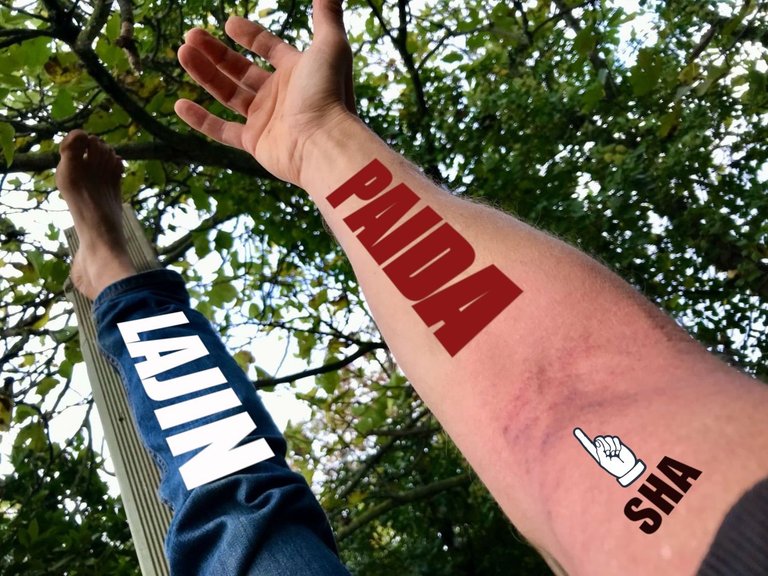
Introduction
I wrote a series of posts last year on frequency medicines at the end of which it was concluded that while these incredible machines are unquestionably effective we must also change the way we are living our lives if we wish to fix a problem permanently and even though mainstream thinking would have us turn to healthy eating or regular attendance at our local gym as the solution, i am here to tell you that a collection of motionless stretches known as Lajin, along with some slapping exercises known as Paida, will maintain our bodies in a way which goes far beyond conventional western wisdom.
When it comes to diet i have always advised people who are starting out to add more locally grown living food (fruit, salad, raw veg, nuts, seeds etc) to their daily routine rather than stopping with anything they particularly enjoy because in time the body will recognise that which is real food and that which isn't, pushing us subconsciously toward the nutrition it seeks. So when it comes to exercise the same thing can be said. Perhaps your life demands a huge amount of computer time? Well, no need to quit your job just yet when you can simply add practices to your daily routine which will counter the organ and posture damage you are inevitably developing by spending many hours per day in a hunched position.
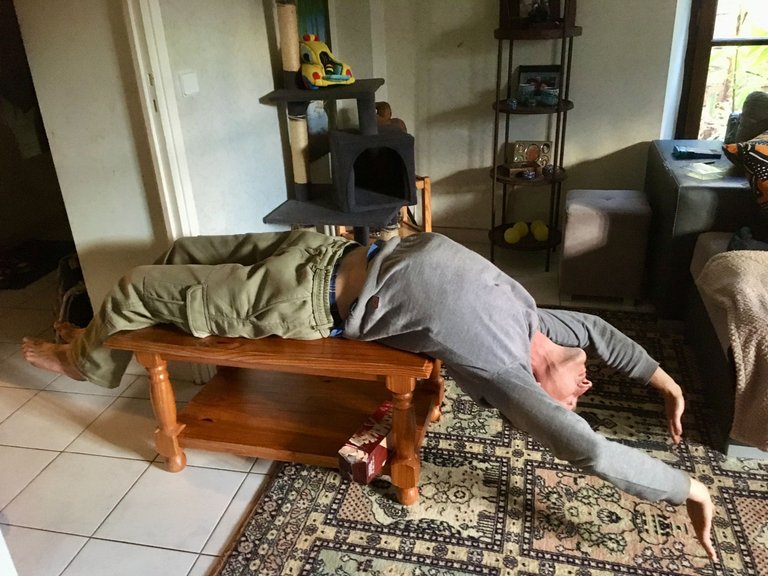
Time is our biggest problem in this busy modern world which demands our attention consistently, so what i am personally looking for is a routine that takes no more than 30mins and while yoga has become a popular method for tuning the body in this respect i have not been able to make this modality stick in my life yet. Perhaps it was exclusively so i could, with the help of Fina my BQH guide, discover PaidaLajin and present it to you now as the most simple & effective life-extension technique i have personally found after 20 years of searching.

PaidaLajin for self diagnosis, treatment & prevention
The Chinese word is comprised of two parts, Paida & Lajin.
Paida means slapping.
Lajin means stretching.
The two practices are complimentary and if one is seeking to cure any kind of major problem in their body they absolutely must be done together, ideally in conjunction with a morning and evening meditation routine.
Practicing PaidaLajin boosts Qi (vital life energy) and also blood flow. In addition it will make a person's yang energy rise and their yin energy fall. This is important because the average human will naturally see a decline in yang energy and a rise in yin as they get older so PaidaLajin acts as the perfect counterbalance, keeping our yin and yang energy (and their associated meridians) in harmony.
Ancient Chinese wisdom states that if we stretch our tendons by one inch this will extend our lives by ten years, so Lajin was born as the simplest way to achieve this.
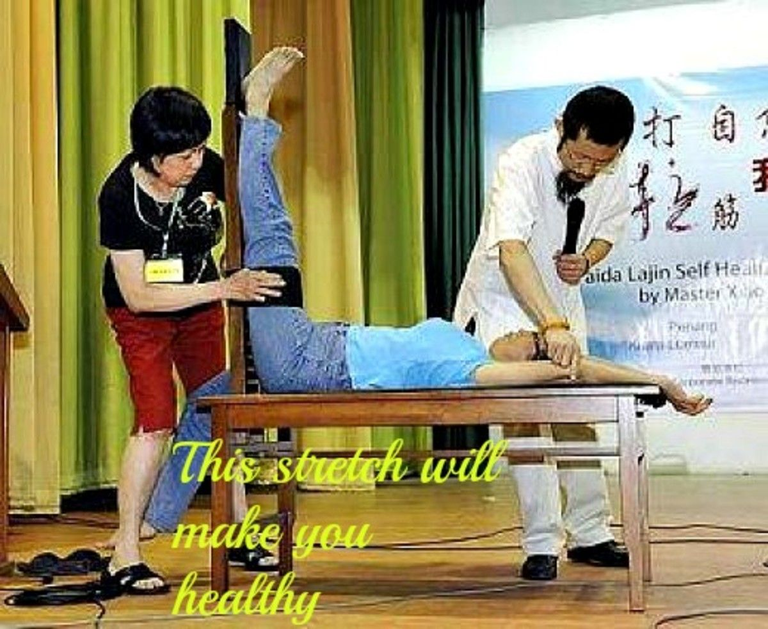
Chinese medicine also recognises the importance of the meridians as vital energetic channels in the body and the way in which we can clear blockages within them by using acupuncture and other such practices, so Paida was born as a simple way to clean these meridians on our own, without the need for a specialised practitioner.
Importantly, they believe that almost all disease stems from blocked meridians so PaidaLajin does not recognise individual disease names, regarding all of them as complex symptoms of simple blockages.
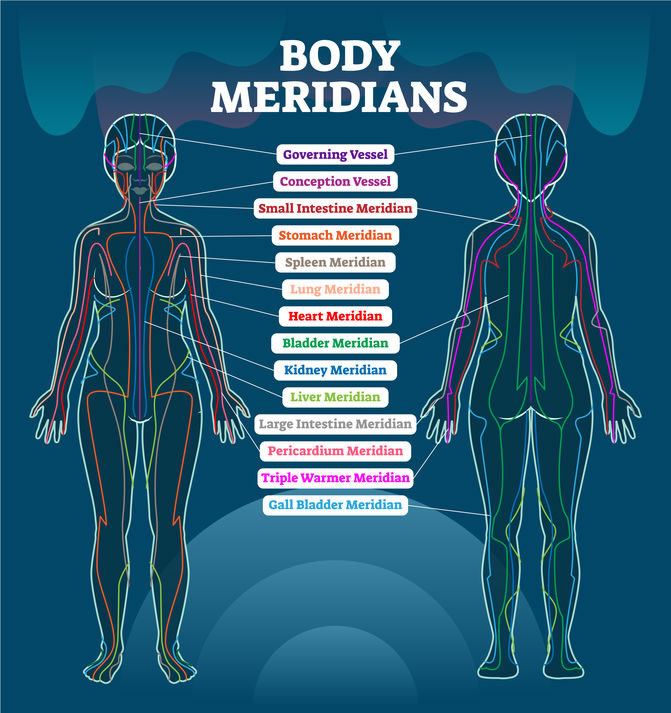
In stark contrast to western medicine which focuses on fixing these symptoms alone, PaidaLajin ignores the symptoms completely and focuses on identifying and fixing the root cause, preventing any chance of the disease reoccurring.
Most interesting of all PaidaLajin gives us the ability to make an accurate diagnosis of our meridians at home by slapping our body in particular places and observing the discolouration (sha) which rises to the surface of the skin as a result. The sha resembles a bruise but unlike a bruise it will disappear if one slaps the same area for long enough, ultimately fixing the blockage. So we can see straight away which meridians are blocked and which are working fine, getting directly to work on clearing the blocked ones with more slapping and stretching.
Finally PaidaLajin can be seen as an effective method for ongoing disease prevention and also as a way to slow the ageing process.
Now let's take a closer look at the two techniques.
Paida: pain medicine
While slapping may appear reminiscent of self flagellation, this stigma quickly disappears when a person begins to practice it, particularly if they use a mantra at the same time.
The following words work great for me: "I'm sorry. Forgive me. Thank you. I love you."
I am speaking of course to my body with these words and each slap is timed to fit each little sentence, with a gap of around half a second between slaps. One finds their own rhythm.
Here is the inner elbow of my left arm clearly displaying sha after slapping it consistently for 5mins.
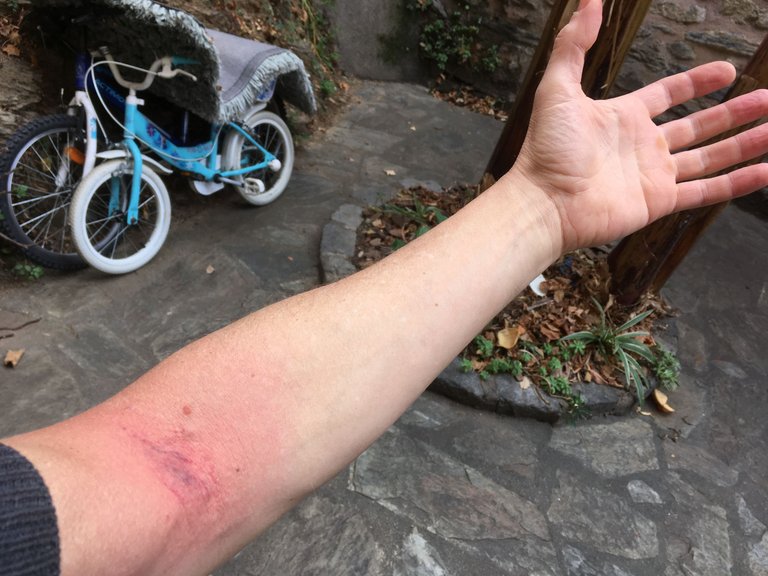
It does hurt a fair bit if your meridians are blocked, but read further and you will understand why this kind of pain is very important.
According to Chinese Medicine, pain during PaidaLajin is the process of yang energy rising. It produces medicine in vivo (within the living.) Persistent pain indicates continuous production of the medicine. Pain directly stimulates and opens up the Heart, triggers willpower, and mobilizes yang energy. The Heart, King of Internal Organs, governs the spirit. Although pain can be felt all over the body, it is the Heart that feels pain first. It mobilizes the body’s resources to deal with the crisis. Qi and blood flow most rapidly to the problem area, in an attempt to protect the body.
According to Western Medicine, pain stimulates the endocrine system to secrete biochemical substances the body needs. Endogenous medicine means a treatment the body creates for itself. These include, but are not limited to, various hormones and stem cells. Pain is a natural response to the creation of these factors. Perhaps pain, itself, is the medicine. We are educated to regard pain as something negative—even evil—and try our best to avoid it. Seen from another perspective, pain and illness are good— they are warning signs that point us in the direction of healing.
---'Heal Yourself Naturally Now' by Hongchi Xiao
I have personally observed many times how if we push through the pain, benefits await us. The only painkillers i have taken in the last decade were for the crazy intense tooth pain i experienced earlier this year, so i am familiar with all kinds of pain. Particularly foot pain because i don't wear shoes and often catch the sharp points of rocks as i walk which push up into the cracks in my dry feet. But what i have noticed most of all about foot pain is that after a decade of experiencing it, the word "pain" has faded away because it is no longer an accurate way to describe what is happening. I feel the pain but it doesn't registers as something negative, rather something which is building me up, making me stronger. And only now, having finally read 'Heal Yourself Naturally Now' by Hongchi Xiao, do i fully understand why that would be.
The thing is about disease is that it takes a long time to manifest fully and even if you don't feel it now, there is a reserve of pain inside you and no possibility of avoiding it. One way or another you are going to feel pain, but the good news is that by practicing PaidaLajin it can be released before the disease is even discovered and while the pain of slapping may feel uncomfortable this is massively preferable to the pain of a fully manifested disease.
Here is the inner elbow of my left arm clearly displaying sha after slapping it consistently for half an hour, repeating the mantra over and over.
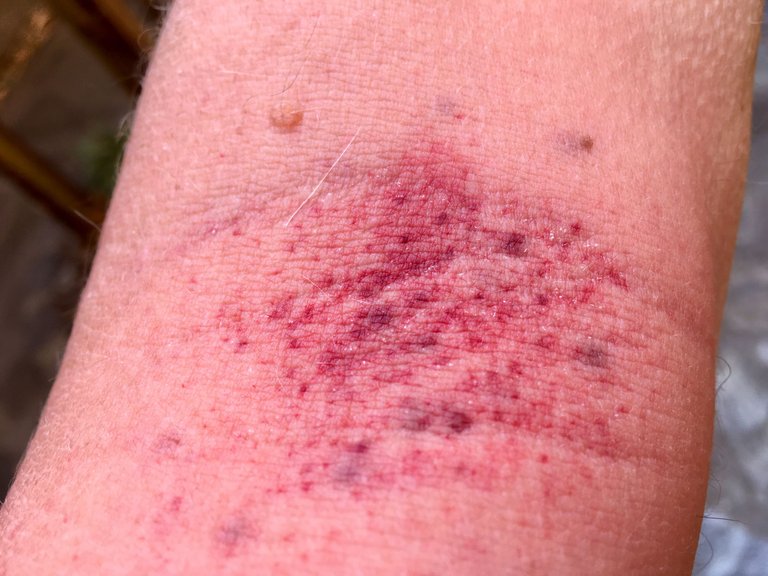
The book says that it should stop hurting after three minutes but this was not true for me. It hurt the entire time! The book also says however that the more pain you experience, the more blocked the meridian is. Therefore, a person with perfectly functioning meridians will experience no pain at all when they slap and the skin will just turn a light shade of red, with no dark spots.
As you can see this was not the case for me when i tried it for the first time.
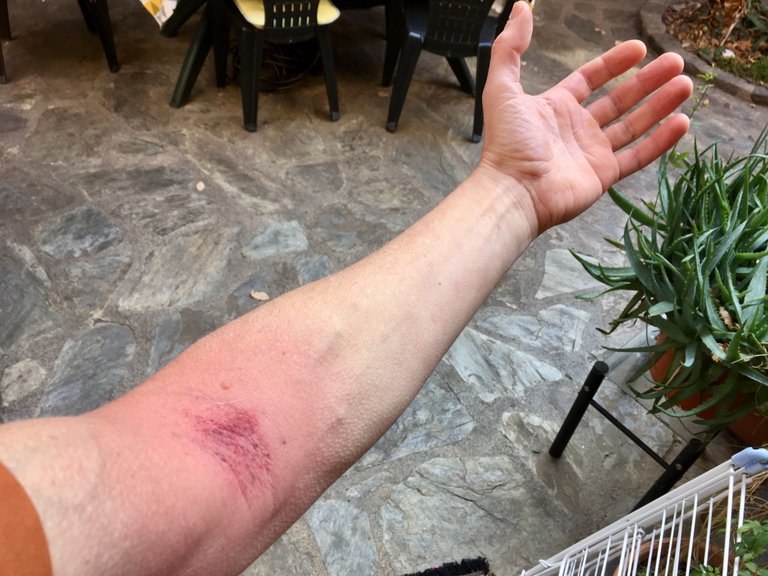
I didn't freak out because according to the book 90% of people doing this for the first time will feel pain and see the sha appear, a sign of blockages to the Heart Meridian, displayed below as the red line extending from our armpit to our little finger.
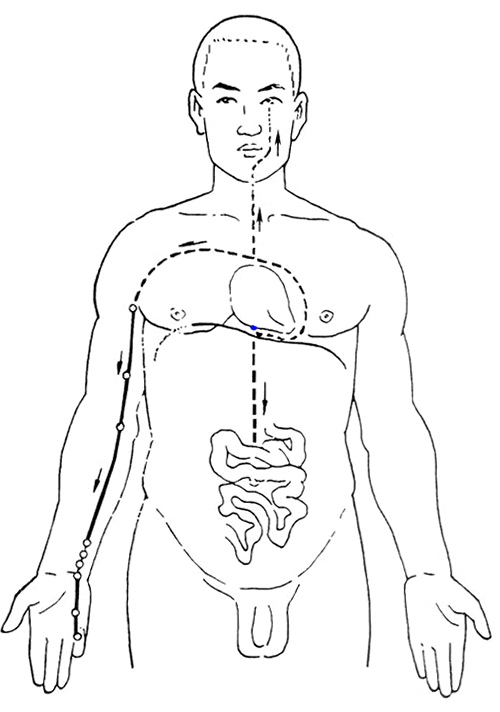
Since then i have been mostly focused on that left side of my heart meridian and after doing 5mins this morning i was encouraged to see there is a vast improvement now with almost no visible sha.
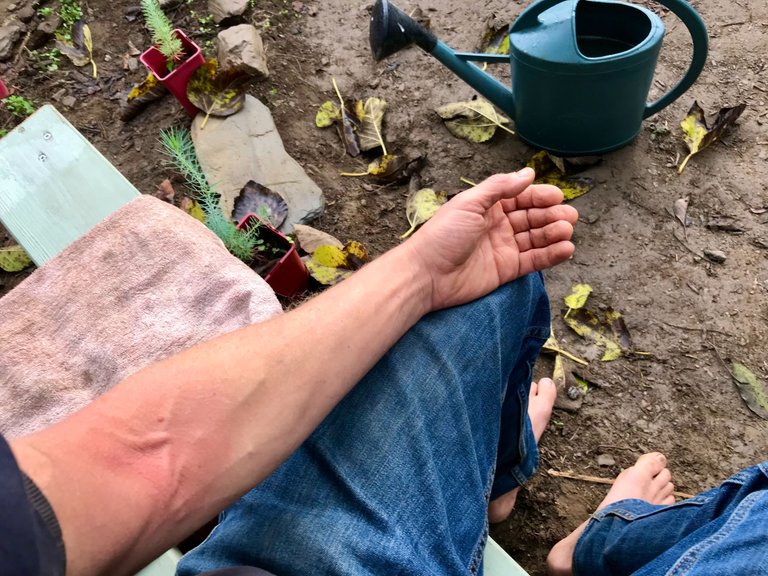
The right side of this meridian is a different story however and i still have some work to do yet.
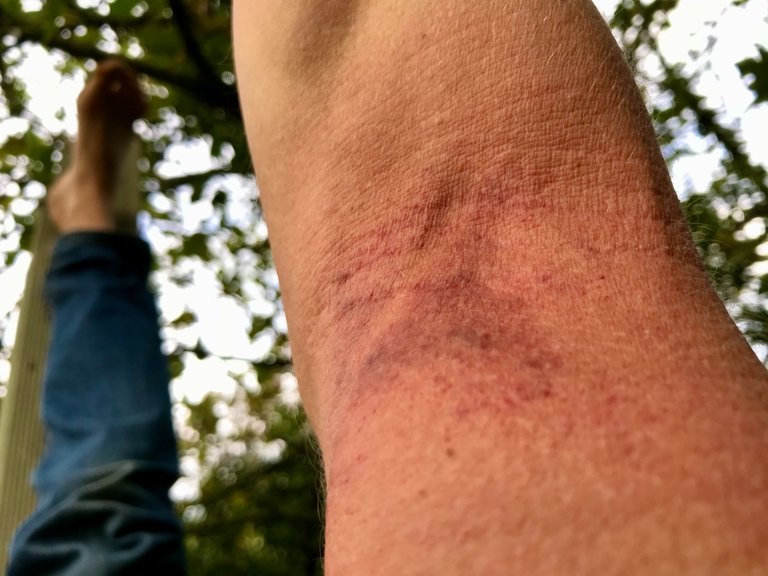
But now at least i am fully in control of my own personal healing mission with a clear and achievable goal.
Lajin: tendon extension = life extension
Of the two practices i enjoy Lajin the most simply because it doesn't hurt after the first few weeks and actually feels very relaxing. This is in stark contrast to the Paida which does still case me pain, indicating the ongoing presence of blockages.
Just as there are many different places to slap the body in Paida (usually around the joints where the meridians run closest to the skin) there are many different ways in which we can stretch out our body and hold a motionless pose, increasing the length of our tendons over time.
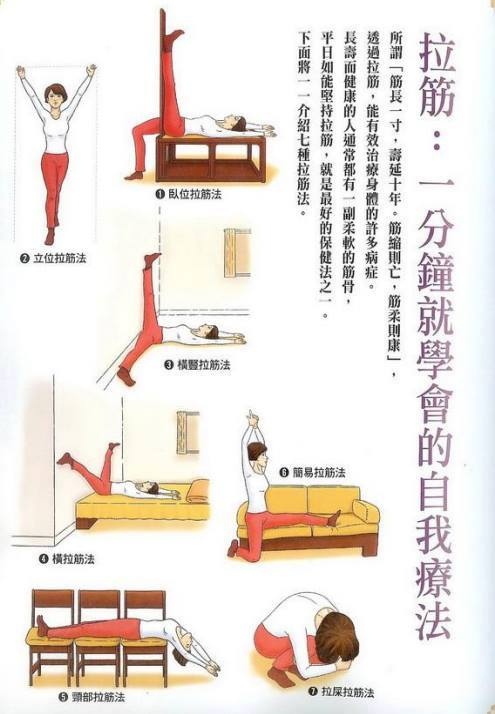
The most popular position is known as a reclining (or reclined) Lajin and requires a bench of some kind.
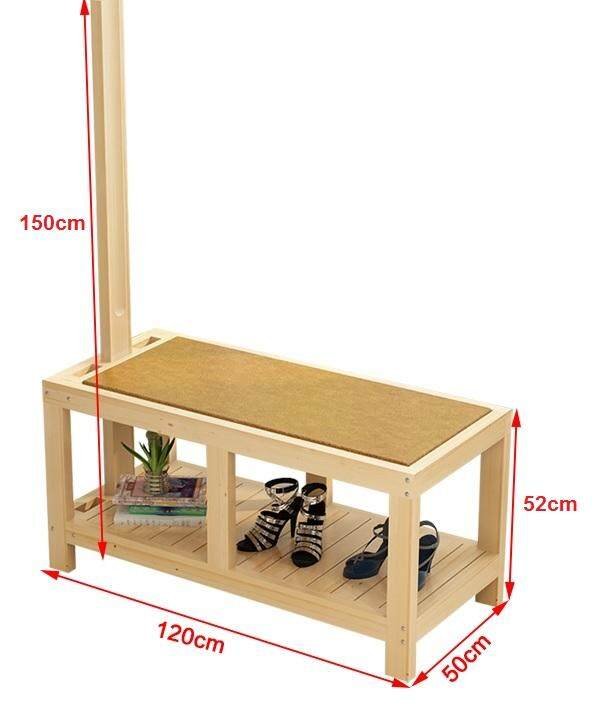
You can also use two chairs and the corner of a wall like this.
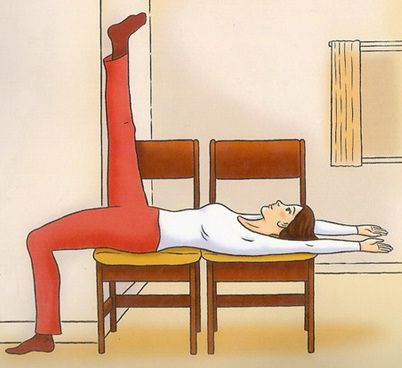
For a while i did use the wall technique but found it a bit tiresome having to move the bench all the time to switch legs, so ultimately built one for the garden where i am much more at peace.

My first model of this Lajin bench felt like it might break so i have since then reinforced the board with two bamboo poles sunken into the ground.
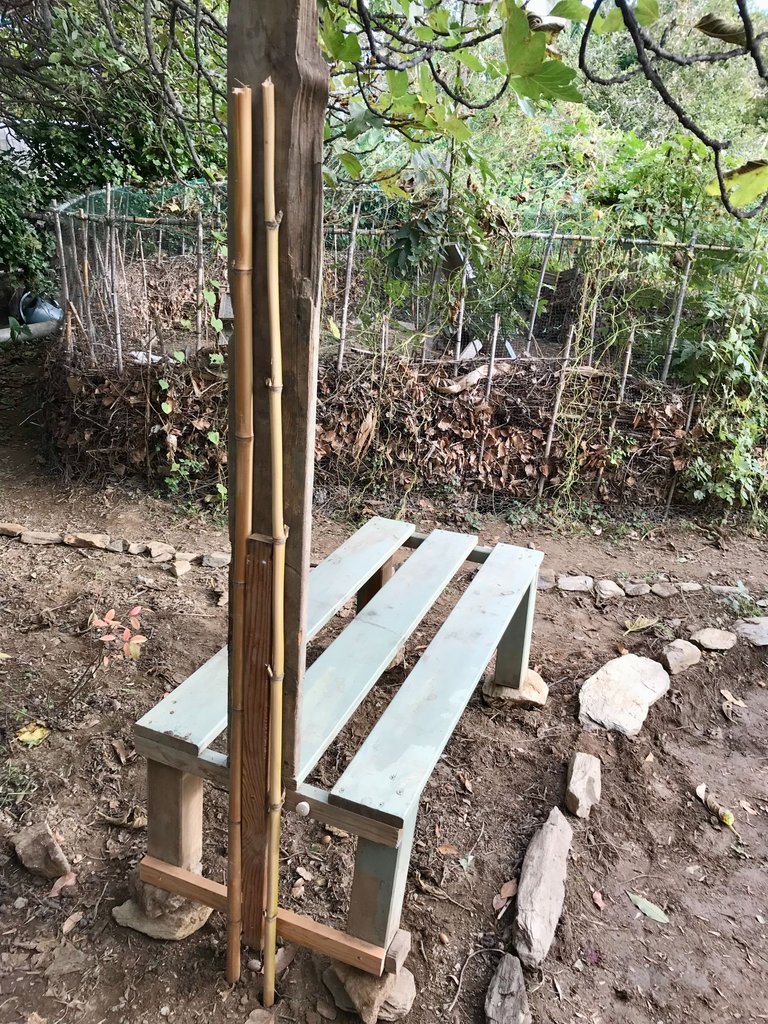
Once you've had some practice with this position you will find it beneficial to pull your toes down like this, stretching out as far as possible.
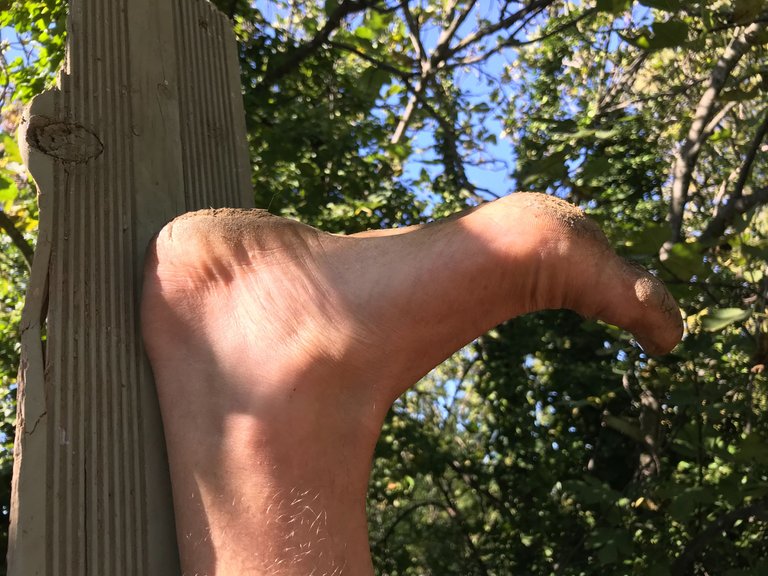
Weights can also be placed on your toes to achieve the same goal of pulling those tendons as far as they will go, but that's more advanced level stuff. For beginners some people like to use velcro straps to attach the knee firmly to the board, but this is only if you are having a really hard time holding the position. If you simply cannot bend that knee, don't stress it and just practice with a bent knee, pulling it inward over the course of a few weeks more and more until it is flat with the board, reminding yourself the whole way that pain is good for you! For me it took 3-4 days of practice before i was able to put my leg flat on the board without feeling very uncomfortable.
The reclining Lajin stretch affects the bladder meridian which is the longest, running from the top of the head all the way to the toes.
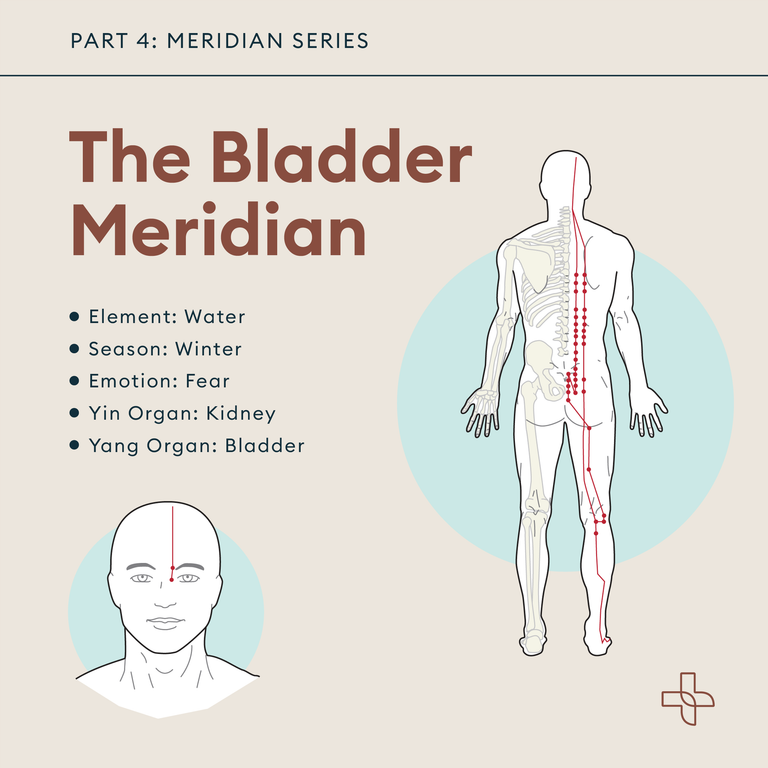
It is interesting to note here that my most blocked meridian is this one and while i am not aware of any bladder or kidney problems i am extremely aware of my hot feet, which have been hot since my late teens. They are so hot all the time that i absolutely cannot sleep unless they are outside the covers and as you all know, i don't wear shoes except for around 4 months of the year in the coldest part of Winter. So i am wondering now if my hot feet are not a side effect of the blocked meridian? Time will tell.
When researching this subject in the Summer i came across an old friend Tim Shieff, someone who used to attend a weekly spiritual meeting i ran in London many years ago before going on to become a freerunning champion and so much more, now in the public eye with a clothing brand and big following. Tim is an incredible human being and i should probably give him a post of his own but for now i recommend you check out this excellent video he made two years ago on the reclined Lajin position and why it is the most important of these stretches.
Other stretches i do include hanging off the back of my Lajin bench to correct the hunched posture i mentioned earlier.
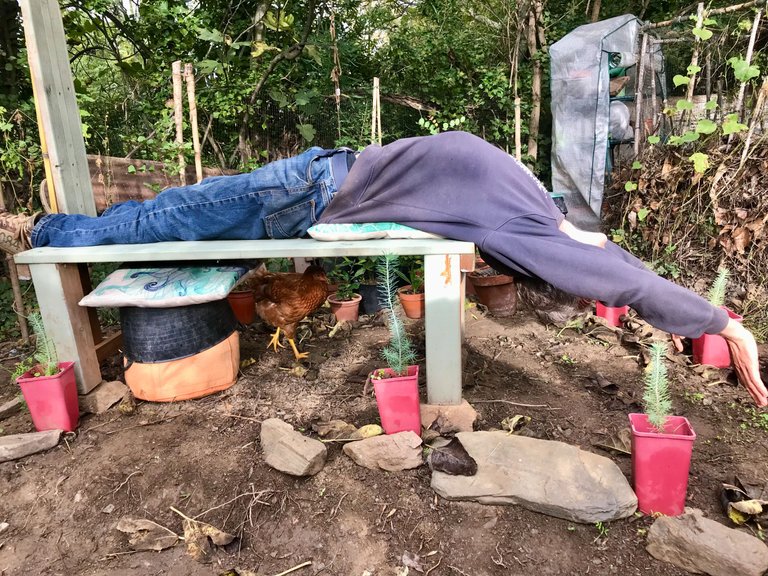
I also stretch my calves with a little board i made.
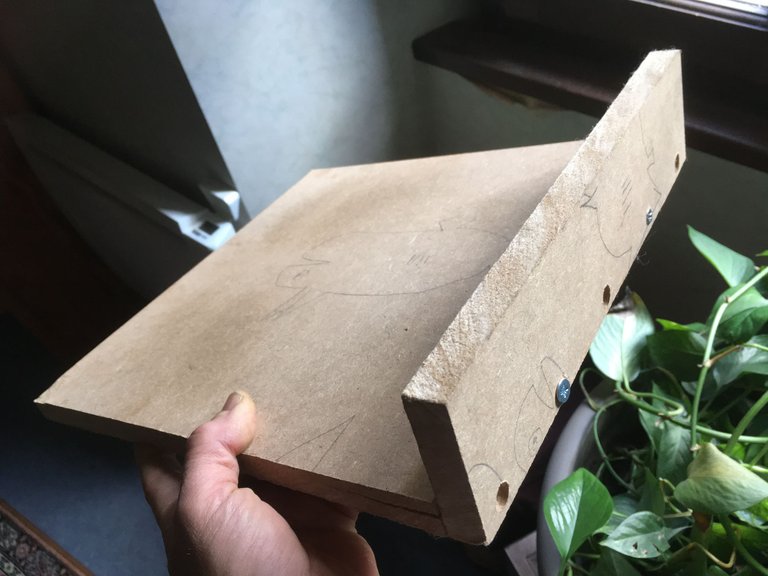
All you do is stand up straight on the board and hold the pose for as long as you can, ideally 3-5mins.
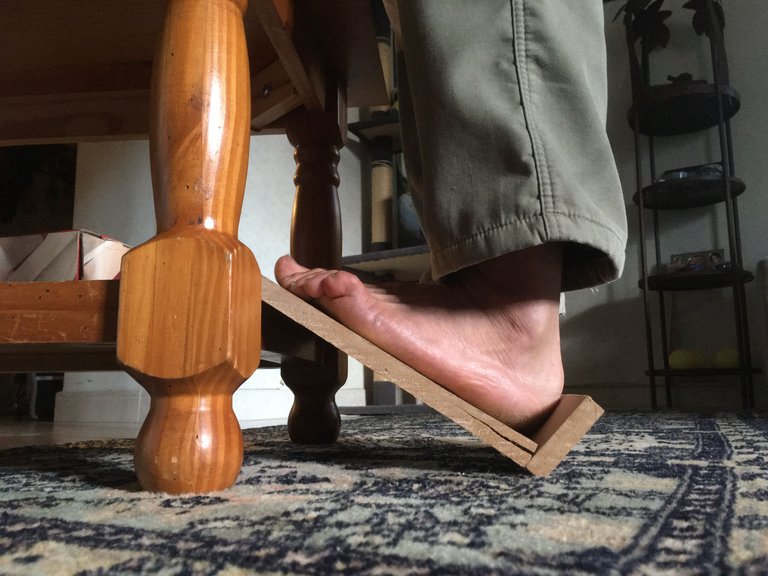
In the garden i am using this area where i have prepared the soil to fit my desired position.
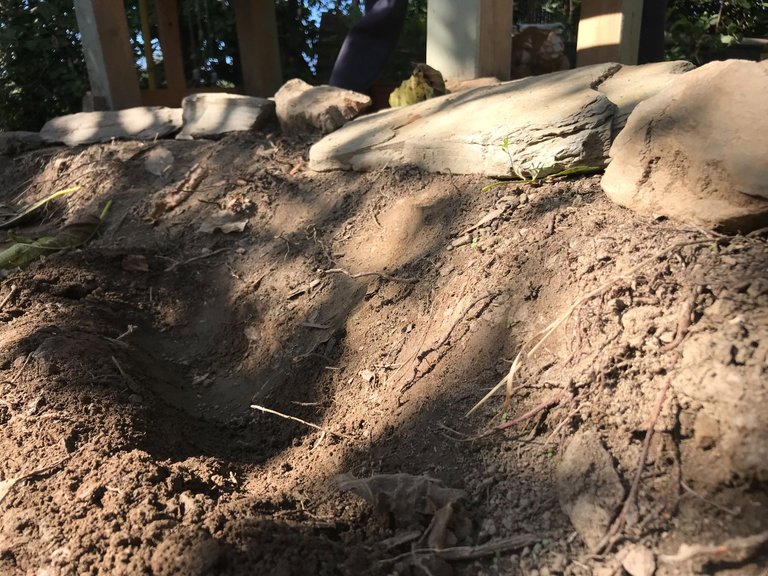
Having a little ridge behind the feet to hold them in position is important if you're not wearing shoes on a grippy surface.
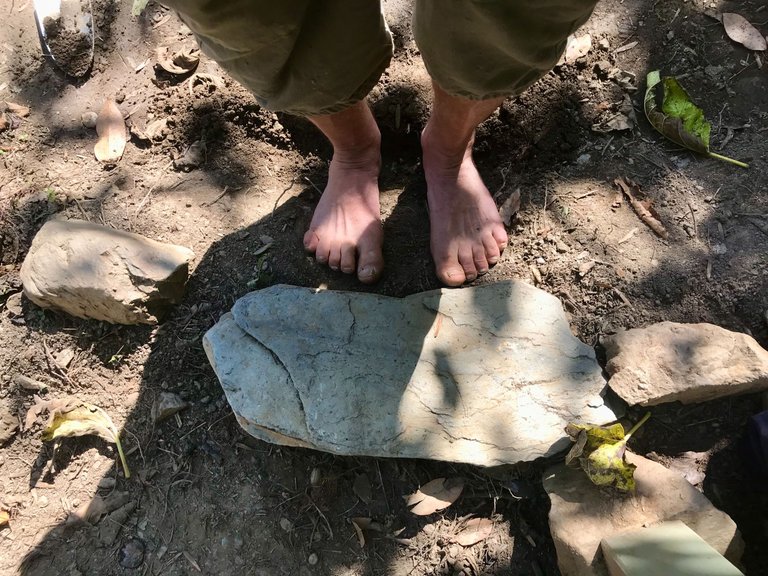
Most people just buy these kind of contraptions of course.
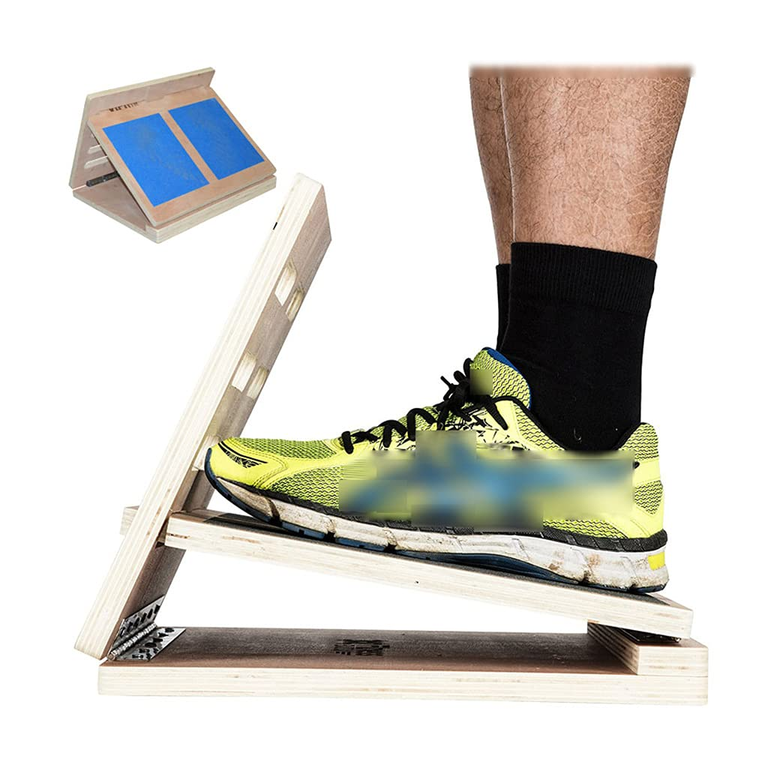
But having tried it now in the soil i can tell you this unquestionably feels better simply because we are fully grounded when our bare feet rest on the naked earth. Standing on dry grass will have less effect because it is less conductive but wearing plastic soled shoes will have no effect whatsoever, so take them off whenever you can and get grounded!
Finally i do a squat with each hand holding the opposite elbow, head bent forward resting on the knees.

Ever since the invention of chairs & toilets the squat has been largely forgotten in the west as the most natural position to hold both for 'sitting' and pooping, compressing the organs and tendons in just the right way to facilitate total relaxation and a sense of balance.
You can do this with your feet flat on the floor but for best results Tim recommends using a small wedge to raise the feet at the back and angle the posture slightly differently.
I always do the squat last as it is the most relaxing, like a reward after all that stretching.
In Summary
My 30min routine is as follows:
10mins - meridian slapping (different each day as i feel directed)
4mins - reclining lajin left leg
4mins - reclining lajin right leg
4mins - back stretch (hunchback correction)
4mins - calve stretch
4mins - squat
Only in the last few weeks have i begun in earnest with this routine so i don't have too much to say about it yet. Plus it has been raining a lot so i've missed some days recently but i can report that having done the reclining Lajin on an almost daily basis for the last three months i am much better at touching my toes comfortably now without bending the knees. In addition there was a muscle tension behind my left knee which isn't gone but unquestionably feels better. When i stop doing this Lajin daily however the tension returns, so the underlying problem (bladder meridian blockage) still needs to be resolved with further slapping and stretching.
I've heard some pretty amazing testimonials involving CPR professionals who found Paida to be more effective at resuscitating patients than any of our modern techniques and also people claiming that doing Paida on their head made their white hair re-gain its colour.
Will be interested to try this one out for myself!
I even heard a story about a little girl who was able to save the life of her grandmother after she suffered a heart attack by giving her Paida (as instructed on a telephone) while she waited for the ambulance. You see, the thing about Paida is that it is so crazy simple, even a scared little girl can get it right.
Final thoughts
The idea that we have forgotten our true healing abilities resonates with me deeply and so too does the idea that some of us are starting to remember! We are physical extensions of an All Powerful Divine Creator, fully capable of fixing any ailment on our own, no matter how severe! The business of selling medical drugs to the people however is obviously preferable to educating us on our natural God-given abilities, so few of us will ever learn about this subject and fewer still will break free from their dependency on pills and a medical industry which cannot, by very definition of the word INDUSTRY, be interested in the idea of everyone healing themselves at home in a natural manner.
The confusion i suppose comes for people because they cannot see the connection between the medical industry which pushes drugs on us and the mainstream media & education systems which teach us that people are dying older than ever due to all the wonderful advancements in medical science, reminding us always about how terrible things were in the past. The truth of course is that there are more diseases now than ever before in human history and all major industries are connected by the mega-rich parasite elite class who work as one to keep us naive and increase profit for the key players without any regard for the health of humanity at large. On the contrary, bad health makes more money and those who live the longest these days are those who are able to avoid the medical system altogether.
Thankfully, by practicing PaidaLajin on a daily basis you are certain to never need medical drugs again!
Along with all the other benefits i encourage you to discover for yourself.
Further research & potential pitfalls
The most important resource of all must surely be Master Xiao's book 'Heal Yourself Naturally Now'. Xiao is largely responsible for introducing PaidaLajin to the west and breaks it down for us in a way that is clear and easy to understand. He is not claiming to be bringing us anything new in this book, but rather something forgotten, something ancient.
Naturally he has been vilified by the mainstream media in an attempt to put us off his suggested practices, so don't be surprised if you come across some very dismissive articles focusing on a single case in which a 71 year old patient of his died. Goodness knows how many doctors lose patients every day but you won't find dedicated smear campaigns about them.
Here's one from the UK's Sun newspaper two months ago.
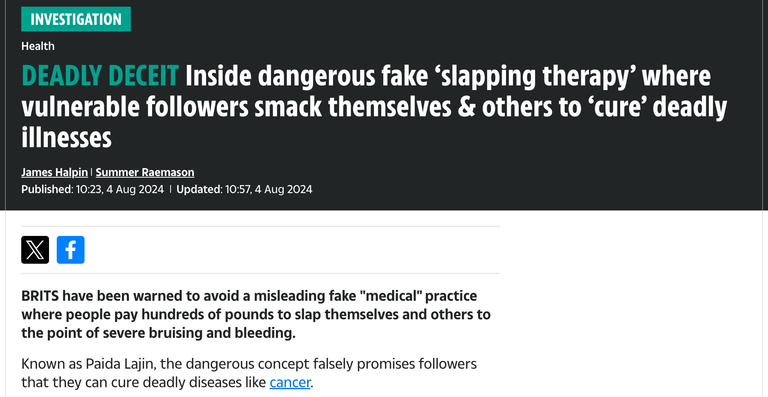
Xiao actually covers this point in the book and invites us to slap an area of the body where the meridians are not running close to the surface and we will see how it does not 'bruise' in the same way. This is because sha is not bruising and relates exclusively to meridian blockages.
They do not mention Lajin or the meridians at all in the article or indeed the countless testimonials coming out today, but they do tell us the following:

Nothing about this statement is correct and whoever wrote it clearly did not read the book. Plus they can't even spell pseudo-science right!
The subject of PaidaLajin has been pretty much shut down online and you won't come across it by accident now, except of course the smear campaign.
I asked the brave browser AI how many people are practicing PaidaLajin in China today and this is the first question i have ever seen it hands down refuse to answer.

What a surprise!
Chat GPT does at least admit that "possibly millions of individuals incorporate variations of walking meditation (PaidaLajin) and similar practices into their daily routines". Which makes it sound rather less like pseudo-science doesn't it.
Developing a simple routine is key to success and this 6min round of Paida exercises seems a decent place to start out for people who are not quite ready to see the sha yet.
Finally, here is a really useful video introduction to PaidaLajin.
So I think that's it for now.
I will upload Xiao's book to the @survival-archive account as soon as i can.
Do please let me know if this practice sounds interesting to you?
Or are you deterred by the idea of pain?
Love & Light everyone 🌱
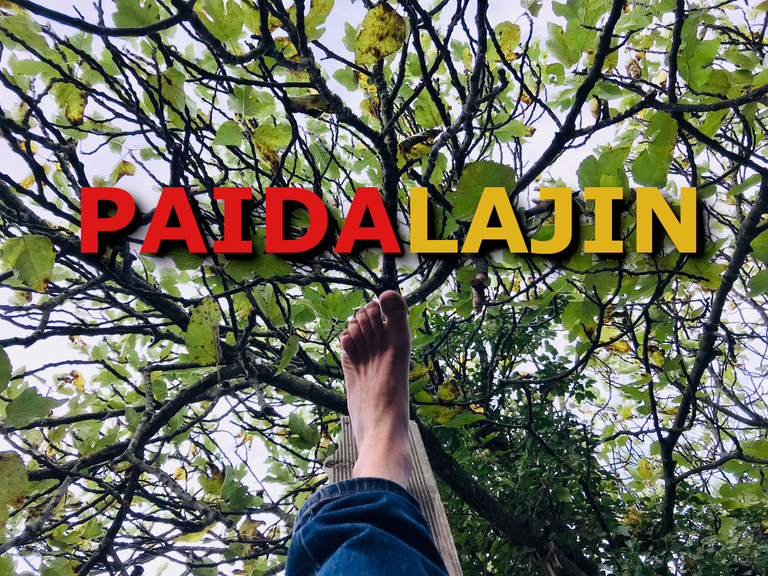
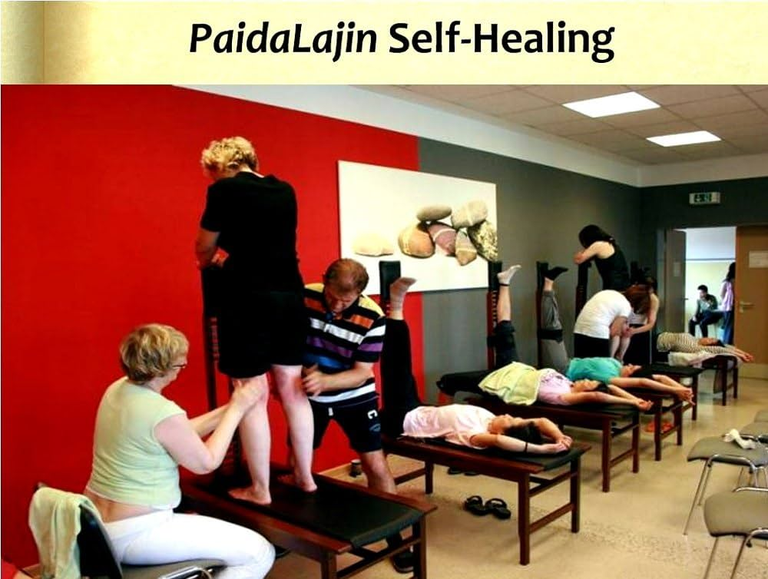
Hi Sam, crazy post, and I love it!
First, I'm glad you had a fantastic time in the UK and that you moved into a cozy new home nearby.
The meridians ... A couple of days ago, I listened to an interview with Zach Bush (MD) in which he mentioned blocked meridians (especially female/male energy disbalance) due to wearing rings. It was the first time I heard about this, and it made me reflect upon it a lot.
The hanging off the back position is super beneficial after working at the laptop for a few hours. Hitting the gym twice a week is a must for me, so I get a lot done in those sessions: stretching calves, squats etc. The biggest impact on my "physicality" was incorporating some of the exercises the KneeOverToesGuy trains. It literally changed my life. No more knee pain and stronger legs. You can look him up here: https://www.youtube.com/@TheKneesovertoesguy
After reading your post, I'll add the 'stretching of my feet' exercise (Lajin bench) to my practice. I'll use the wall for this one. Slick! Thank you for the insights.
Have an amazing weekend, Sam 🥰
Hey Krisz!
Thank you for leaving a comment here. I guess this one was a bit too 'out there' for people! haha.
I realise now reading your words that perhaps the gym is a more useful tool than i give it credit for. Personally i have always avoided them, simply choosing instead to take the heaviest bags possible, run up those stairs instead of walk up them, push myself to make that thing i need out of bamboo from the forest rather than buy it from the shop. You get the idea. And the thought of being in a gym just doesn't compute for me. I would be so desperate to get back to all the physical jobs which need doing!
Great catch on rings affecting meridians. Didn't see that one mentioned in the book. Are you a ring wearer? Have never worn them in my life. Even my father's gold family crest ring didn't interest me when i was given it at the age of 18. But Sabrina wears them, so i will also reflect some more on this. Am guessing each finger is connected to a different meridian?
Am looking at the kneesovertoes guy and wondering which exercises in particular you are referring to? I am going to need strong legs for next year's mission, the food forest.
Great that you are going to add the reclining Lajin to your routine! The guy i mentioned in this post, Tim Shieff, really has an amazing body and energy, so if he says this is the best of all the stretches we can do for our body, i believe him.
You too, have a great weekend.
Big hugs to the feline crew!
Hi Sam,
I'll get straight to your questions.
I've been wearing a Claddagh ring for years now. After deciphering the "worship" frequency encoded into these attractive rings plus the insights re. Meridian blockages I stopped wearing it; only very recently though.
The exercises I incorporated into my training from TheKneesOverToe guy:
walking backward,
strengthening my knees while doing squats on an upward board (also using weights),
split squats with weights,
calf raise/stretching
Here's a video with his top 10 mobility exercises which include what I do:
The results are astonishing! I highly recommend his exercises.
The guy trains athletes, lots of injured athletes, and sports peeps. He was a professional basketball player; he went through tons of knee surgeries.
I'll check out Tim Shieff. Thx!
And I'll pass your hugs to my feline crew. Please do the same with yours ❤️
Thanks so much Krisz!